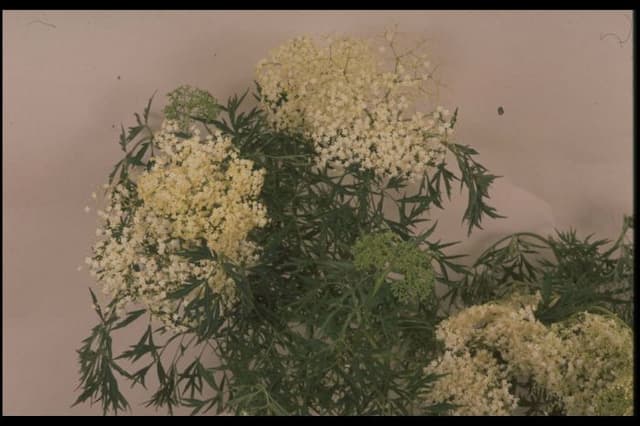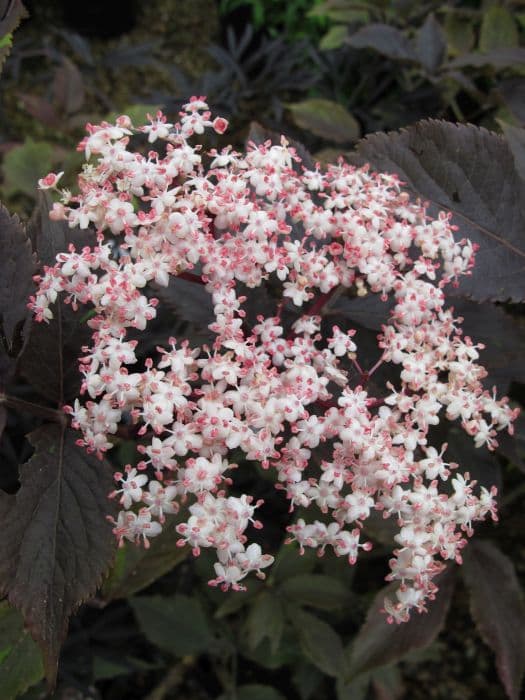Winton Viburnum Viburnum × hillieri 'Winton'

ABOUT
The Viburnum 'Winton' is a decorative plant known for its attractive foliage and floral display. The leaves of this plant are prominently veined and have a textured, leathery feel. In spring, the 'Winton' breaks into a spectacular bloom of small, tubular flowers that are typically in shades of white or light pink, although the specific color can vary. These flowers are often fragrant and form clusters that provide a striking contrast against the green foliage. As the seasons change, the foliage may transition to a reddish or purplish hue, adding further visual interest to the plant. In addition to its leaves and flowers, this viburnum might produce berries, usually in hues of red or blue-black, which can attract birds and other wildlife to the garden. The overall form of the plant is typically well-branched and bushy, creating a full and robust appearance.
About this plant
 Names
NamesFamily
Adoxaceae
Synonyms
Hillier's Viburnum, Winton Viburnum
Common names
Viburnum × hillieri 'Winton'.
 Toxicity
ToxicityTo humans
Viburnum 'Winton' is generally considered not highly toxic to humans. However, it may cause mild stomach upset if ingested in large quantities. Symptoms due to consumption could include nausea, vomiting, and diarrhea. There may also be variations in individual sensitivities, so it is advisable to avoid ingesting any part of this ornamental plant.
To pets
Viburnum 'Winton' is also not known to be highly toxic to pets such as cats and dogs. If a pet ingests parts of this plant, they may experience mild to moderate gastrointestinal upset. Signs of poisoning could include drooling, vomiting, and diarrhea. If a large amount is consumed, or if your pet is particularly sensitive, it's best to consult a veterinarian.
 Characteristics
CharacteristicsLife cycle
Perennials
Foliage type
Deciduous
Color of leaves
Green
Flower color
White
Height
6-8 feet (1.8-2.4 meters)
Spread
4-6 feet (1.2-1.8 meters)
Plant type
Shrub
Hardiness zones
5
Native area
Hybrid origin; not applicable
Benefits
 General Benefits
General Benefits- Ornamental Appeal - The Viburnum × hillieri 'Winton', or Winton Viburnum, offers year-round ornamental interest with its attractive foliage, flowers, and fruit.
- Landscape Versatility - This plant can serve various functions in the landscape, such as a hedge, a stand-alone specimen, or part of a mixed border.
- Wildlife Attraction - It produces flowers that attract pollinators like bees and butterflies, and berries that provide food for birds.
- Seasonal Interest - Winton Viburnum features a succession of appealing visual changes: spring flowers, summer foliage, autumn color, and winter berries.
- Low Maintenance - Once established, it requires minimal care, making it suitable for gardeners of all skill levels.
- Drought Tolerance - After establishment, this plant demonstrates some drought tolerance, reducing the need for frequent watering.
- Adaptability - It can adapt to a range of soil types, though it prefers well-drained soils with moderate fertility.
- Cold Tolerance - Being hardy in many climate zones, it can withstand cold winters, making it a reliable choice in various landscapes.
 Medical Properties
Medical PropertiesThis plant is not used for medical purposes.
 Air-purifying Qualities
Air-purifying QualitiesThis plant is not specifically known for air purifying qualities.
 Other Uses
Other Uses- Viburnum 'Winton' can be used as a natural dye source, with various parts of the plant providing shades of blue or grey when processed correctly.
- Flexible stems of the Viburnum 'Winton' may be woven to create small baskets or decorative items by skilled craftspeople.
- The dense foliage of Viburnum 'Winton' can be used in garden design for noise reduction, especially useful in urban gardens near busy roads.
- Leaves of the Viburnum 'Winton' can serve as a natural mulch, providing nutrients to the soil as they decompose.
- During winter, the plant's attractive structure and berries can be incorporated into festive wreaths and holiday decorations.
- Viburnum 'Winton' berries can provide a food source for birds, supporting local wildlife and birdwatching activities.
- Photographers and artists may use Viburnum 'Winton' as a subject or backdrop due to its aesthetic flowers and growth habit.
- The plant's branches can be used in ikebana, the Japanese art of flower arranging, for their elegant form and structure.
- Viburnum 'Winton' can be planted as part of a living fence to demarcate property lines or create private garden spaces.
- When planted en masse, Viburnum 'Winton' can act as a tall ground cover, suppressing weeds and reducing garden maintenance requirements.
Interesting Facts
 Feng Shui
Feng ShuiThe Hillier's viburnum is not used in Feng Shui practice.
 Zodiac Sign Compitability
Zodiac Sign CompitabilityThe Hillier's viburnum is not used in astrology practice.
 Plant Symbolism
Plant Symbolism- Renewal: Viburnum is often associated with renewal because it blooms in spring, signifying the awakening of nature.
- Protection: In some cultures, viburnum is believed to offer protection due to its dense growth, providing shelter and a safe haven.
- Elegance: The Hillier Viburnum's sophisticated and orderly structure is often linked to elegance and refined beauty.
 Water
WaterThe Hillier's Viburnum should be watered deeply once a week during its growing season, making sure the soil is moist but not waterlogged. In the hot summer months, this may need to be increased to twice a week, providing about 1-2 gallons per watering session depending on the size of the plant and the weather conditions. During the winter, reduce watering to every other week or when the soil feels dry to the touch. It's always better to check the moisture level of the soil before watering to prevent overwatering, which can lead to root rot.
 Light
LightHillier's Viburnum thrives best in full sun to partial shade. Choosing a spot that receives morning sunlight with some afternoon shade can be ideal. However, the plant is adaptable and can also tolerate a position in brighter, indirect light, but it may not flower as abundantly.
 Temperature
TemperatureHillier's Viburnum prefers moderate temperatures and can generally tolerate conditions between 30°F and 80°F. While it can survive a light frost and brief periods of cold down to about 20°F, sustained exposure to temperatures below this can damage the plant. Ideally, keep it in an environment where temperatures remain between 50°F and 75°F for the best growth.
 Pruning
PruningPruning Hillier's Viburnum is important to maintain its shape, remove dead or crossed branches, and encourage healthy growth. The best time to prune is late winter or early spring before new growth begins. Prune lightly, focusing on shaping the plant and thinning out older stems to encourage air circulation and new growth, typically once per year or as needed to control size.
 Cleaning
CleaningAs needed
 Soil
SoilThe best soil mix for Hillier's Viburnum is well-draining soil with a mix of loam, peat, and sand; ensure it has a slightly acidic to slightly alkaline pH balance, ideally ranging from 5.6 to 7.5.
 Repotting
RepottingHillier's Viburnum is typically planted outdoors and does not require repotting; when grown in containers, repot every 2-3 years to refresh the soil.
 Humidity & Misting
Humidity & MistingHillier's Viburnum prefers moderate humidity levels but is quite adaptable and can thrive in average outdoor humidity conditions.
 Suitable locations
Suitable locationsIndoor
Place Hillier's Viburnum in a bright spot, avoid dry air and drafts.
Outdoor
Plant in well-draining soil, partial to full sun, mulch root zone.
Hardiness zone
4-8 USDA
 Life cycle
Life cycleViburnum × hillieri 'Winton', commonly referred to as Winton Viburnum, starts its life as a seed that, when conditions are favorable, germinates and grows into a seedling. The seedling stage is characterized by the formation of a primary root and shoot, which then develops into a young bush as it matures and produces leaves. As the viburnum matures, it enters the vegetative stage, where it invests energy into growing larger and creating a sturdy structure of stems and foliage. Following this, Winton Viburnum enters the reproductive stage, developing clusters of small, often fragrant flowers that are typically white or pink, attracting pollinators to facilitate cross-pollination. After successful pollination, the plant produces fruit, which are small drupes that can be dispersed by animals or gravity, thus beginning a new cycle with seed dispersal. Over several years of growth, the plant reaches maturity and will continue to cycle through vegetative and reproductive stages annually until it eventually declines and dies, completing its life cycle.
 Propogation
PropogationPropogation time
Early Spring
The most popular method of propagation for Viburnum x hillieri 'Winton', commonly known as Winton Viburnum, is by softwood cuttings. This process typically takes place in late spring or early summer when the plant's new growth is just beginning to harden but is still flexible. Cuttings about 4 to 6 inches long are taken from healthy, current year's growth and the lower leaves are removed. The cut end of the cutting is dipped in rooting hormone to encourage root development and then planted in a well-draining soil mix. Keeping the soil consistently moist and providing a high humidity environment by covering the cuttings with a plastic bag can greatly improve the chances of successful rooting. The cuttings are usually ready to be potted up or planted out the following spring after roots have formed and new growth is evident.









